Wheat is a dominant cereal crop and its scientific name is Triticum aestivum L. It is one of the most important crops in many countries in terms of both production and consumption. In general, Wheat is considered a highly responsible crop for early fertilizers, especially phosphorus and nitrogen.

In a starter fertilizer, a little nitrogen can also benefit Wheat, but growers should be careful about how fertilizers containing nitrogen and potassium are applied as starters for Wheat. Let’s check out the best fertilizer for Wheat.
Best fertilizer for Wheat
NPK fertilizers
Apply NPK fertilizer as per soil test recommendation. Nitrogen, phosphorus, and potassium doses of 50, 25, and 12 kg per acre, respectively, were optimal for maximum production of Wheat under irrigation through municipal wastewater. The omission of both N or P or K and their excessive amounts adversely affected Wheat production. Apply fertilizer based on a soil test. In the absence of soil testing, apply the following amount of fertilizer to Wheat grown on moderately fertile soil.
| Fertilizers | Kg/acre |
| N | 50 |
| P2O5 | 25 |
| K2O | 12 |
| Urea | 110 |
| DAP(18.46%) | 55 |
| Superphosphate (16%) | 155 |
| Nitro phosphate (20:20%) | 125 |
| Muriate of potash (60%) | 20 |
All available sources of nitrogen and phosphorus are equally efficient. When 55 kg of DAP or 125 kg Nitro phosphate is used, reduce the amount of urea to 20 kg and 50 kg respectively.
Starter fertilizers for Wheat
When fertilizing with seeds, nitrogen and potassium rates should be limited to avoid the possible toxicity of the seeds. When putting the starter fertilizer in direct contact with the Wheat seed, the producer should use the following instructions;
- In rows 15 inches apart, apply no more than 16 pounds of nitrogen plus potash for medium to well-structured soil, or 11 pounds for sandy or dry soil.
- Use a maximum of 24 pounds of nitrogen plus potash for medium to fine soils and 17 pounds for sandy or dry soils in 10-inch rows.
- For 6-to-8-inch rows, 30 pounds of nitrogen plus potash should be applied on medium to fine soils and no more than 21 pounds for sandy or dry soil.
- Generally, urea-based nitrogen should not be applied in any row spacing or soil type with seed.
In case you miss this: Ways Wheat Farming Make You Rich in a Short Time
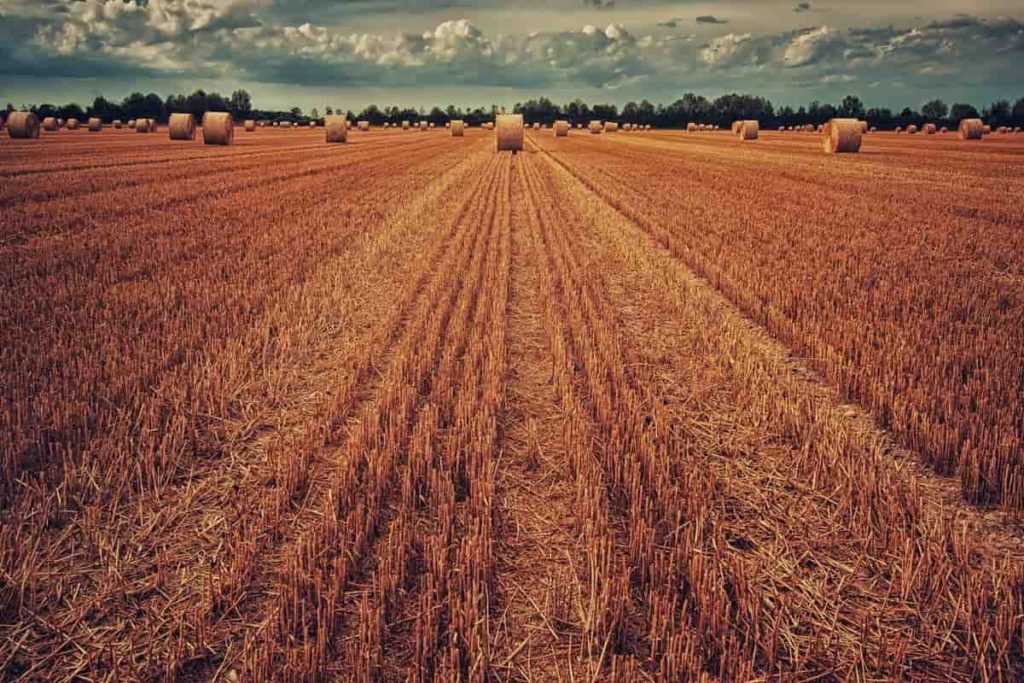
Important fertilizers for Wheat crop
Nitrogen
The use of nitrogen in divided quantities has become a well-established practice because urea is a highly leaching fertilizer. Two-thirds or half should be applied at the time of sowing and the remaining one-third or half should be applied at the time of first irrigation in medium or heavy soil. On sandy soils, the top dressing should be done in two or three installments if a large amount of nitrogen is to be applied. In rainy conditions, a full dose of N should be applied to the soil before sowing.
All nitrogen fertilizers currently available in the market are equally effective for Wheat under normal soil conditions. In calcareous soils (containing free lime) and hard alkaline soils, 10-30% of applied nitrogen can be lost through ammonia volatilization, if urea or other ammonia fertilizers are used for top dressing. In such cases CAN (Calcium Ammonium Nitrate or Kisan Khad) should be preferred over Urea.
The most important role of N in a plant is its presence in the structure of proteins, the most important building material from which every living thing or protoplasm is made. In addition, nitrogen is also found in chlorophyll, which is a matter of leaf green color. Chlorophyll enables the plant to transmit energy from sunlight through light synthesis. Therefore, nitrogen supply to the plant will affect the amount of protein, protoplasm, and chlorophyll. In turn, it affects cell size and leaf area, and photosynthetic activity.
Phosphorus and Potash
For phosphatic and potassic fertilizers, it is best to place the seeds in moist soil. Apply a full amount of phosphorus and potash at sowing time. If possible, place phosphorus and potash 3-5 cm to the side and 3-5 cm below with the help of the fertilizer drill method. In the case of phosphatic fertilizers, one should consider not only the total phosphorus but also the amount of soluble phosphorus in the water.
Phosphatic fertilizers for Wheat should contain at least 50% of total phosphorus in water-soluble form and the rest in the soluble form of phosphorus citrate. It is relatively important in neutral and alkaline soils. Rock phosphate, for example, is relatively inexpensive, but if applied to neutral or alkaline soils, it will be of little use to the crop due to its low solubility.
In case you miss this: Organic Wheat Farming, Production Practices
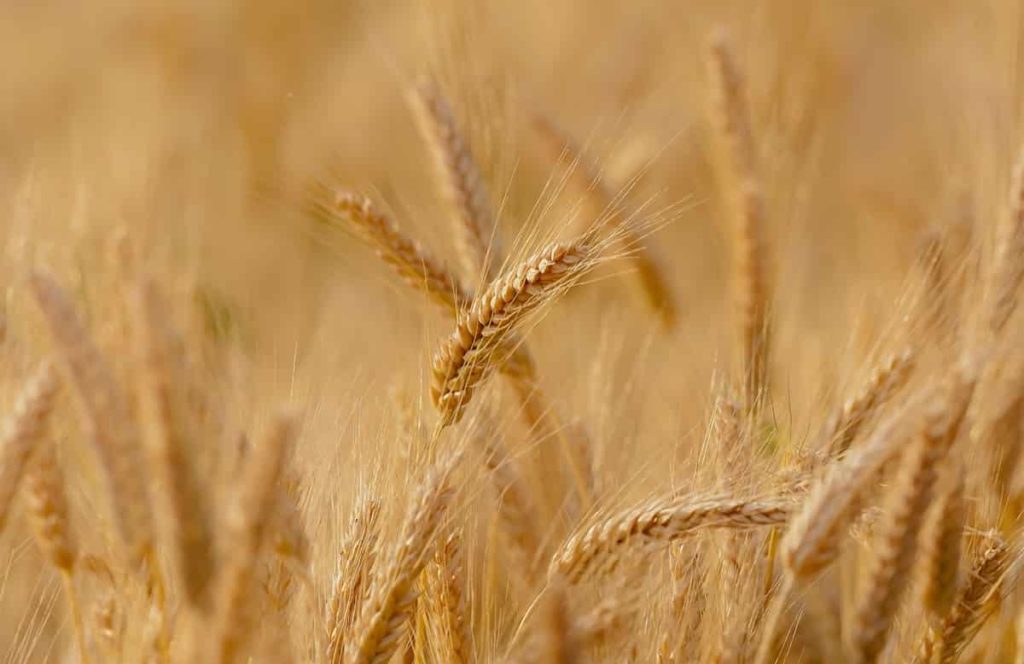
In acidic soils (less than pH 6), the use of basic slag or rock phosphate may be more profitable than superphosphate or diammonium phosphate as the cost per unit of phosphorus is much lower in later soils. And superphosphate is most effective when applied in granular form, while citrate soluble fertilizers are most effective in the form of rock phosphate and basic slag fine powder.
Muriate of Potash and Potassium Sulphate is the only potassic fertilizers currently available in the market. Both are equally good for Wheat. In addition to the important nutrients (N, P, and K), good reactions have been reported in many areas regarding micronutrients, especially zinc. If zinc deficiency is observed in the area, it is recommended to apply zinc sulfate @ 25-30 kg/ha at the time of the last plowing.
Potassium
Wheat needs potassium for optimal growth and development. Proper potassium results in improved photosynthesis performance, increased resistance to certain diseases, and improved water quality due to increased water use efficiency. As a result of sufficient potassium, Wheat straw is strengthened and helps in filling the grains.
Sulfur
Sulfur is an important component of proteins and an important component in the formation of chlorophyll. Without adequate sulfur, crops may not be able to reach their full potential in terms of yield or protein content. Nor can they make effective use of nitrogen, phosphorus, and other important elements.
Micronutrients for Wheat crop
Micronutrients are required for maximum crop production and the term micronutrients refer to the relative amounts required for plant growth and do not mean that they are less important to plants than other nutrients. Wheat growth and development may be delayed if any of these elements are deficient in the soil or if a nutrient is not properly balanced with other nutrients.
Organic fertilizers
Nutrients play an important role in Wheat production. Well, rotten farmyard manure (FYM) or compost should be applied at the rate of 15 to 20 tons every two years. Wheat growth and yield to various levels of compost and organic manure are;
In case you miss this: Buckwheat Cultivation (Kuttu), Farming Practices
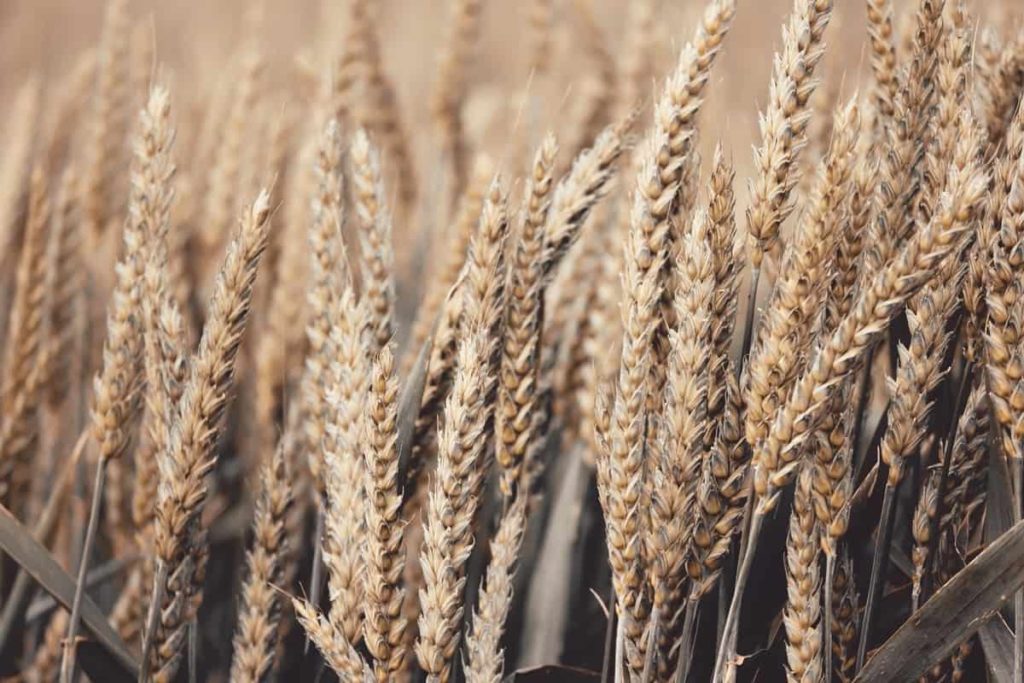
Organic manure is traditionally used to supply plant nutrients. Their size and other operational issues forced farmers to use inorganic fertilizers. Recycling organic waste is considered a great solution to get rid of large piles of waste. The obtained product effectively provides nutrients while improving soil conditions. This is because the current method of application of inorganic fertilizers cannot meet and maintain the quality of soil required for sustainable crop production.
Effects of organic manure and compost on Wheat productivity were investigated in sandy clay loam soils. To supplement inorganic fertilizers, the quantity of different organic fertilizers should be improved to increase crop yields. Changes in Wheat growth and production parameters were measured by inorganic fertilizer control. The organic modifications had positive but variable effects.
The use of organic manures increased Wheat production by 11.13 (105%) to 13.53 (128%) grams per pot, which is a matter of control. Wheat plant height, number of crops, spike length, straw production, grain production, and weight of 1000 grains were all statistically different from control. The results of the trial suggested that long-term use of various organic fertilizers could significantly improve the productivity of the crop. Therefore, instead of using inorganic chemical fertilizers alone, integrated use can be more efficient and sustainable for the environment and agriculture.
Fertilizer method
Fertilizers play an important role in Wheat cultivation. The use of fertilizers improves the general physical condition of the soil and enhances its water holding capacity. Large quantities of fertilizer should be added. Apply about 10-15 tons of well-decomposed farmyard manure or compost 4-6 weeks before sowing.
In case you miss this: Wheat Seed Germination, Time, Temperature, Procedure
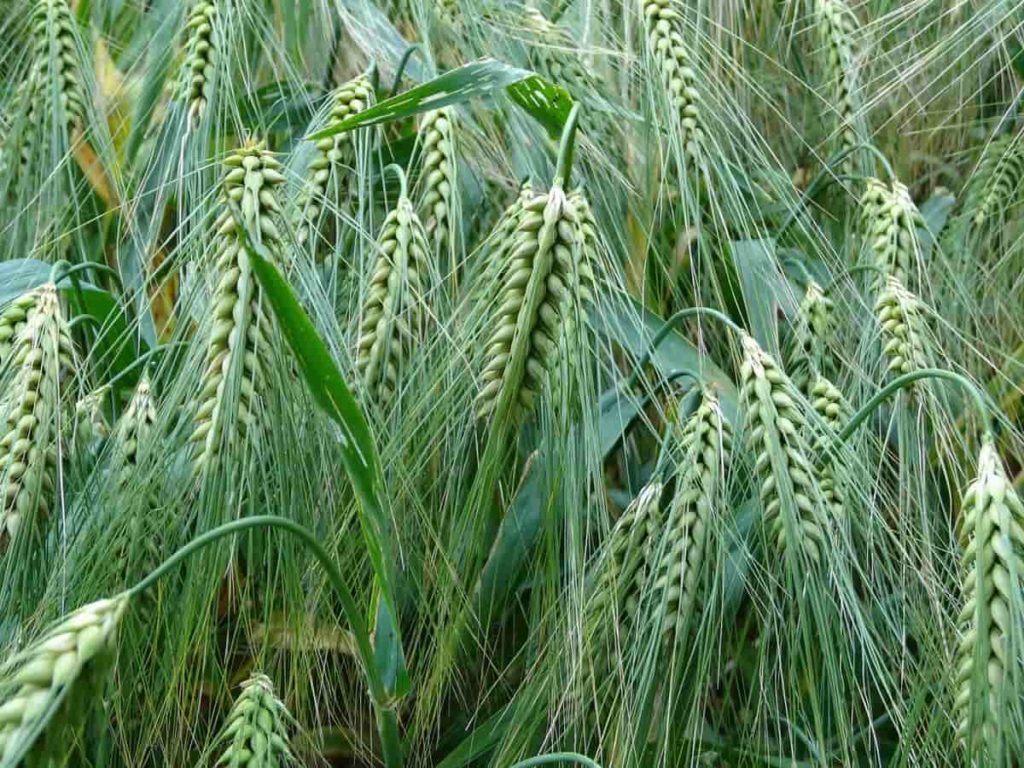
However, manure on its own cannot meet the high nutritional needs of plants which are also in short supply. Therefore, it is necessary to add fertilizers along with chemical fertilizers to get higher yields. The high-yielding bony varieties of Wheat fully demonstrate their productive potential when they are provided with the right amount of nutrients at the right time.
Method of application
Three important factors should be considered when applying fertilizer in Wheat. These are;
- The right dose of nutrient application keeping in view the needs of the crop,
- The timely use of these nutrients, and
- Appropriate method of application.
Fertilizer application time
Drill 1/2 dose of N and whole P and K at sowing time and broadcast the remaining N with first irrigation. If nitro phosphate is used as a source of P, stop using nitrogen at sowing.
- If green manure has been applied to the field in the last Kharif season, reduce the amount of nitrogen to half. Apply phosphorus recommended for Wheat on green manure crops. In summer, green maize fertilizer also increases the yield of Wheat.
- If farmyard manure has been applied, add 2 kg nitrogen and 1 kg phosphorus per 10 quintals of farmyard manure. This press mud (6 tons/acre) is applied to the previous rice, reducing the N dose of fertilizer by one-third and the P dose of fertilizer by half.
- Apply 10 tons of farmyard manure per acre there is no phosphorus and only half of the recommended nitrogen dose needs to be added.
- Wheat crop is sown after mid-December, apply 25% less nitrogen as recommended for the normal sown crop.
- Apply 25% more nitrogen than recommended to the crop sown in color soil.
- If nitrogen is to be used in the form of urea, give half of the dose before or after the pre-sowing irrigation preparation, the second dose 7 days before, or 5 days after the first irrigation. In light soil apply 1/2 nitrogen at sowing time, 1/4 nitrogen immediately after first irrigation, and remaining 1/4 nitrogen after second irrigation. If the crop is deficient in nitrogen, urea can also be applied as a foliar spray during late tillering and late weeding stages. For larger spray pumps, use 3% urea solution (3 kg in 100 liters of water). Spraying can be done crosswise to cover the crop well and a total amount of 300 liters of water per acre should be used. In the case of low volume, up to 20% urea can be used.
- Wheat is more responsible for phosphorus use than Kharif crops. Therefore, apply phosphorus on Wheat and stop using it on the next Kharif crop.
In case you miss this: Wheat Cultivation Income, Profit, Yield, Proejct Report
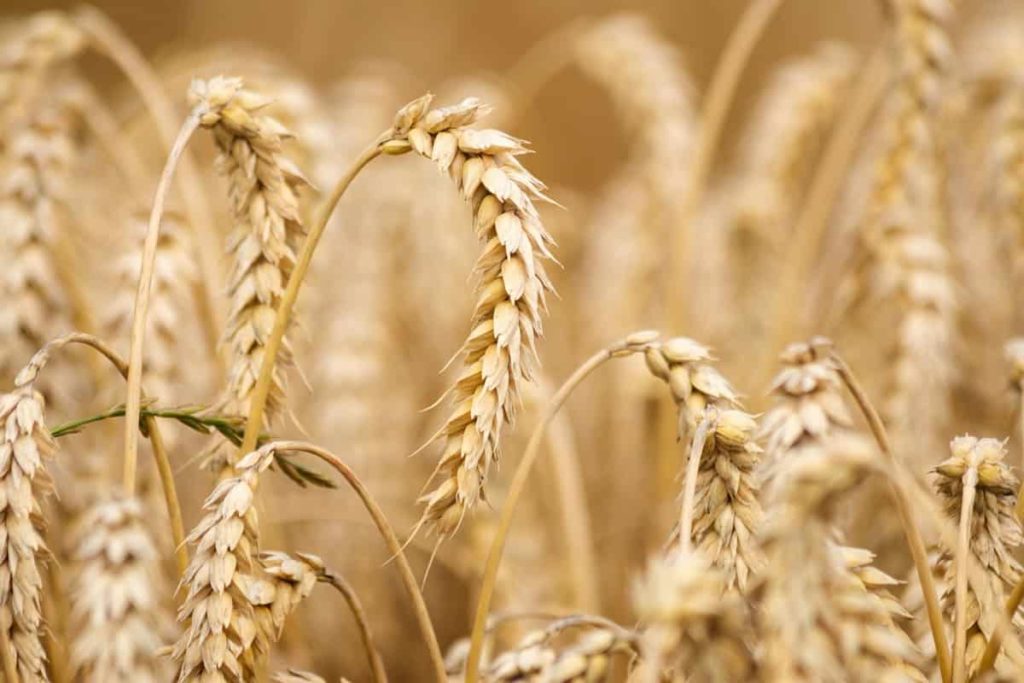
How to increase Wheat yield
A balanced crop nutrition program, including all macro and micronutrients, is essential to help manage all of these components. Nitrogen and potassium are the most essential nutrients for maintaining high Wheat yields. In general, the Wheat crop will use 60% more potassium than nitrogen, which is low in phosphate and sulfur requirements but still important. The need for phosphate, on the other hand, is similar to that of sulfur. It is during the rapid spring growth that all macronutrients are in demand.
- Types of Pesticides Used in Agriculture: A Beginner’s Guide
- Economical Aquaculture: A Guide to Low-Budget Fish Farming
- 15 Common Planting Errors That Can Doom Your Fruit Trees
- How to Make Houseplants Bushy: Effective Tips and Ideas
- Innovative Strategies for Boosting Coconut Pollination and Yield
- Pollination Strategies for Maximum Pumpkin Yield
- The Complete Guide to Chicken Fattening: Strategies for Maximum Growth
- Natural Solutions for Tulip Problems: 100% Effective Remedies for Leaf and Bulb-Related Issues
- Revolutionizing Citrus Preservation: Towards a Healthier, Greener Future
- Natural Solutions for Peony Leaf and Flower Problems: 100% Effective Remedies
- Maximizing Profits with Avocado Contract Farming in India: A Comprehensive Guide
- Natural Solutions for Hydrangea Problems: 100% Effective Remedies for Leaf and Flowers
- The Ultimate Guide to Choosing the Perfect Foliage Friend: Bringing Life Indoors
- From Sunlight to Sustainability: 15 Ways to Use Solar Technology in Agriculture
- The Ultimate Guide to Dong Tao Chicken: Exploring from History to Raising
- The Eco-Friendly Makeover: How to Convert Your Unused Swimming Pool into a Fish Pond
- Mastering the Art of Delaware Chicken Farming: Essentials for Healthy Backyard Flocks
- 20 Best Homemade Fertilizers for Money Plant: DIY Recipes and Application Methods
- How to Craft a Comprehensive Free-Range Chicken Farming Business Plan
- Brighten Your Flock: Raising Easter Egger Chickens for Beauty and Bounty
- How to Optimize Your Poultry Egg Farm Business Plan with These Strategies
- Subsidy for Spirulina Cultivation: How Indian Government Schemes Encouraging Spirulina Farmers
- Ultimate Guide to Raising Dominique Chickens: Breeding, Feeding, Egg-Production, and Care
- Mastering the Art of Raising Jersey Giant Chickens: Care, Feeding, and More
- Ultimate Guide to Raising Legbar Chickens: Breeding, Farming Practices, Diet, Egg-Production
- How to Raise Welsummer Chickens: A Comprehensive Guide for Beginners
- How to Protect Indoor Plants in Winter: A Comprehensive Guide
- Ultimate Guide to Grow Bag Gardening: Tips, Tricks, and Planting Ideas for Urban Gardeners
- Guide to Lotus Cultivation: How to Propagate, Plant, Grow, Care, Cost, and Profit
- Agriculture Drone Subsidy Scheme: Government Kisan Subsidy, License, and How to Apply Online
- Ultimate Guide to Raising Araucana Chickens: Breed Profile, Farming Economics, Diet, and Care
- Bringing Hydroponics to Classroom: Importance, Benefits of Learning for School Students
- Ultimate Guide to Raising Polish Chickens: Breed Profile, Farming Economics, Diet, and Care
- Ultimate Guide to Raising Australorp Chickens: Profile, Farming Economics, Egg Production, Diet, and Care
- Silkie Chicken Farming: Raising Practices, Varieties, Egg Production, Diet, and Care
- Sussex Chicken Farming: Raising Practices, Varieties, Egg Production, Diet and Care
Wheat farming and the fertilisers to be used for higher production of wheat is great benefit to me as agriculturist and hope you will guide me in future also.